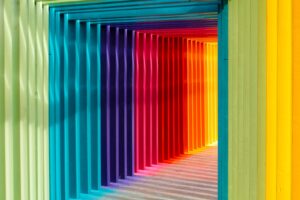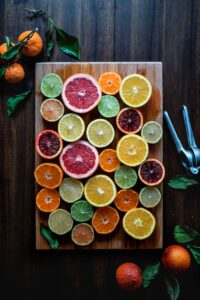The Power of Paint: Transforming Spaces with Color and Texture
 Imagine the walls around you not just as boundaries but as canvases, brimming with potential. In the realm of design, paint is a transformative agent—a medium that can redefine the aesthetic and emotional ambiance of any space. With a spectrum of colors and a diversity of textures at our disposal, the power to revolutionize our living environments lies literally in our hands. In this comprehensive exploration, I will guide you through the artistry of paint, demonstrating how the thoughtful application of color and texture can breathe new life into both interior and exterior spaces.
Imagine the walls around you not just as boundaries but as canvases, brimming with potential. In the realm of design, paint is a transformative agent—a medium that can redefine the aesthetic and emotional ambiance of any space. With a spectrum of colors and a diversity of textures at our disposal, the power to revolutionize our living environments lies literally in our hands. In this comprehensive exploration, I will guide you through the artistry of paint, demonstrating how the thoughtful application of color and texture can breathe new life into both interior and exterior spaces.
The Psychology of Color
Color psychology is a critical aspect of interior design, wielding the power to evoke a range of emotions and set the mood of a space. The hues we surround ourselves with can have a profound impact on our daily experiences. Soft pastels, such as lavender and pale yellow, exude tranquility and are ideal for creating a restful environment in bedrooms or study spaces. On the other end of the spectrum, vibrant colors like scarlet or turquoise infuse spaces with energy and vitality, perfect for social areas like living rooms or creative studios.
Delving deeper, we find that colors can also affect perceptions of space. Lighter colors can make a room feel larger and more open, while darker tones tend to create a sense of intimacy and warmth. The choice of color in a room should align not just with the aesthetic appeal but also with the intended emotional response and functionality of the space.
 Textures That Tell a Tale
Textures That Tell a Tale
Texture in paint brings an added dimension to your walls, contributing both to the visual appeal and the tactile experience of a room. Textured finishes can range from subtle to dramatic, allowing for a high degree of personalization in your decor. Techniques like rag rolling, stippling, and graining not only add visual interest but can also simulate the look and feel of natural materials like stone, wood, or fabric.
In exterior applications, textured paints go beyond aesthetics; they offer practical benefits like weather resistance, durability, and the ability to mask surface imperfections. The choice of texture can dramatically alter the appearance of a building, from a rustic, weathered look to a sleek, modern facade.In interior spaces, the texture of a paint can influence the overall ambiance. For instance, a matte finish can give a sophisticated, understated look, while a glossy finish can make colors pop and add a sense of luxury.
Trends in Paint Technology
The world of paint technology is constantly evolving, with innovations that push the boundaries of creativity while addressing environmental and health concerns. One of the most significant advancements has been the development of low-VOC (volatile organic compounds) and zero-VOC paints. These formulations reduce harmful emissions, improving indoor air quality and making them a preferred choice for health-conscious homeowners.
Recent years have also seen the introduction of paints that can change color with temperature or lighting conditions, allowing walls to transform throughout the day. Moisture-resistant and mold-resistant paints are gaining popularity, especially in bathrooms and kitchens, where they help maintain healthy and durable surfaces.
Eco-friendly paints, made from natural materials and pigments, are also on the rise. These paints not only minimize environmental impact but also offer unique, rich textures and hues that can’t be replicated with synthetic materials.
 Choosing the Right Paint
Choosing the Right Paint
Selecting the right paint is crucial and should be informed by the specific needs of the space. For high-traffic areas like hallways and kitchens, washable and durable paints are ideal. They allow for easy cleaning and can withstand the wear and tear of daily life.
In terms of finishes, options range from matte and eggshell to satin and gloss. Matte and eggshell finishes are excellent for hiding imperfections on walls but are less resistant to stains. Satin and gloss finishes, meanwhile, are easier to clean and more durable but can highlight surface imperfections.When considering exterior paints, factors like climate, exposure to elements, and the material of the building should guide your choice. Paints that offer UV protection, are weather-resistant, and compatible with the building’s material are essential for longevity and maintaining the aesthetic appeal of the exterior.
 Unique Combinations and Applications
Unique Combinations and Applications
The versatility of paint allows for endless creative possibilities. Experimenting with color combinations can yield visually stunning results. For instance, monochromatic schemes, where varying shades of the same color are used, can create a sophisticated and cohesive look. Contrasting colors, on the other hand, can be used to highlight architectural features or create dynamic spaces.
Advanced painting techniques like ombre, where colors gradually blend into each other, and color washing, which gives a subtle, textured effect, can add depth and character to your walls. These methods not only enhance the room’s aesthetic but also allow for a high degree of personalization, making each space unique.
The transformative power of paint is unparalleled. It can redefine the look, feel, and function of any space. Whether through the calming embrace of soft hues or the bold statement of vibrant colors, paint is a medium through which we can express our individuality and shape our environments. As we journey through the ever-evolving landscape of paint and design, we find that the only limit is our imagination.
Ready to embark on a journey of transformation with color and texture? Contact me for a personalized consultation, and let’s harness the power of paint to create spaces that resonate with your style and spirit.

Phone : +1(437-599-8561)
E-Mail : ar.rugaphotography@gmail.com
Hours : Daily 8 a.m – 6 p.m